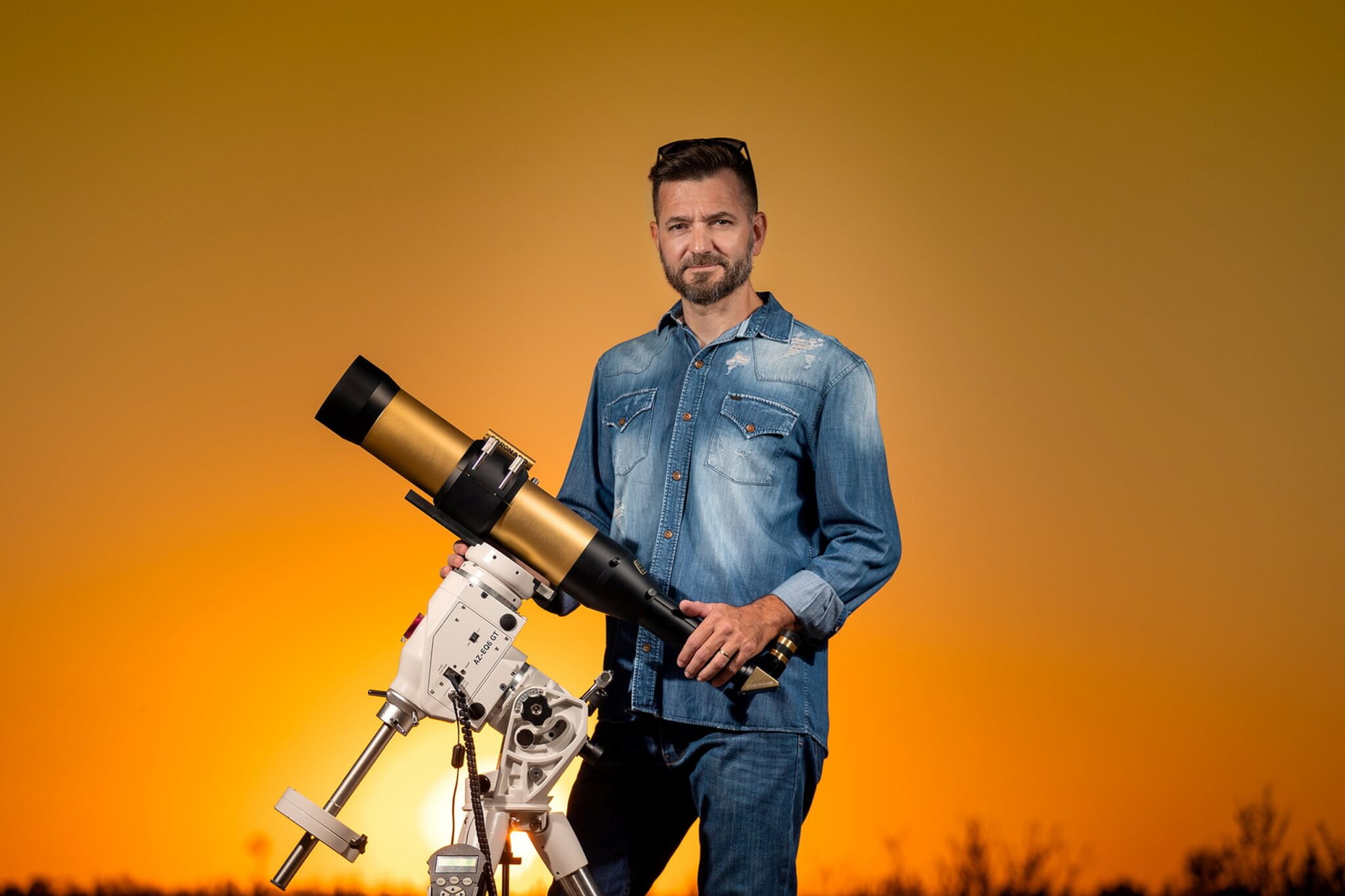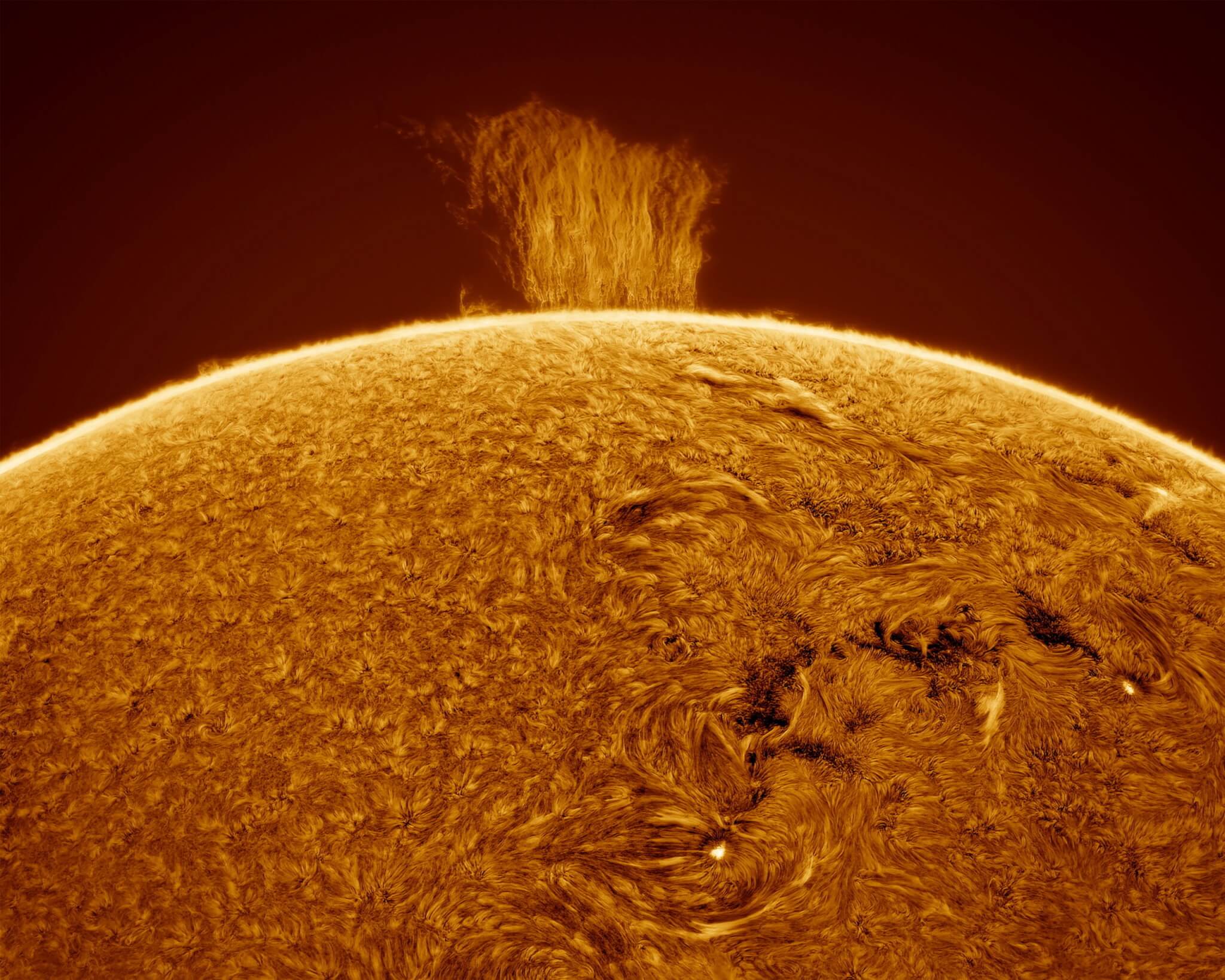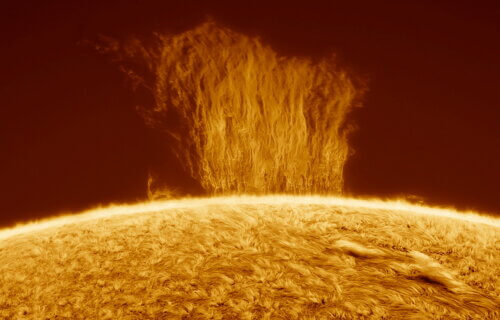SANTA FE, Argentina — An astrophotographer has captured a jaw-dropping view of a 100,000 kilometer-high wall of Sun plasma — from his backyard telescope. Argentinan Eduardo Schaberger Poupeau snapped the amazing spectacle earlier this month.
After reading news about solar prominences occurring, Eduardo rushed into his garden and quickly set up his equipment to try and photograph the incredible phenomenon. “On March 9th, I checked the NSO-Gong network page, which I do every day, and saw a really magnificent prominence on the southeast limb of the sun,” he said in a statement, per South West News Service. “I knew it would be tough to photograph because of the intense heat wave and drought in my area, which causes a lot of turbulence and dust in the atmosphere, making it difficult to capture the sun in high resolution.”
Hellbent on snapping a great photo, Eduardo said he turned to his most powerful telescope to capture the solar emissions in their enormity. “The vision I had on my laptop screen was truly incredible, being able to observe those hundreds of plasma threads dripping down a 100,000 km high wall literally left me speechless,” he said. “I spent about two hours taking pictures, trying to find moments of greatest atmospheric stability to get the best possible result.”
Eduardo notes the importance of having the right equipment when photographing the cosmos. For example, snapping images of the sun requires filters that can handle specific wavelengths of light that the sun emits. For this particular setup, Eduardo used his Sky Watcher Evostar 150 ED DX telescope, a Baader energy rejection filter, a Quark Chromosphere filter, and a Player One Apollo-M Max camera.

“Taking pictures of the sun is always super exciting for me. Every day, I am fascinated by the changing details on the sun’s surface, the movement of sunspots as they travel along with the solar rotation, and the transformations of filaments or sudden flares in active regions,” he adds. “While gratifying, this pursuit is also complicated and requires a great deal of patience. The quality of the sky plays a crucial role in obtaining good results, and I often must wait for long periods to capture the few moments of stability in the atmosphere necessary to produce the images.
“Day after day (whenever the weather allows it) I take solar photographs, in this way I can refine my image capture and processing technique,” he continues. “Although I’ve been interested in astronomy since I was a child, it wasn’t until I photographed Comet McNaught in 2007 that I discovered the world of astrophotography. I gradually became interested in photographing night landscapes, including the Milky Way, the Moon, and the Sun. However, due to the beginning of the pandemic and the severe restrictions on movement imposed in my country, I began to dedicate all my time to photographing the Sun. This way, I specialised in this particular type of astrophotography.”
A solar prominence, also known as a filament when viewed against the solar disk, is a large, bright feature extending outward from the Sun’s surface. Prominences are anchored to the Sun’s surface in the photosphere, and extend outwards into the Sun’s hot outer atmosphere, called the corona.

Report by Dean Murray, South West News Service

LLL live love learn! Excitement comes with every pitcure and all the articles thanks!